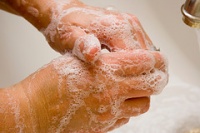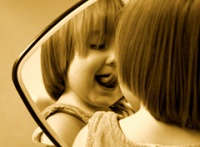
Q: Recently I came across an SLP who was using oral-motor tools but not following sanitary procedures. Ahhhhhh! What resources can I share with her? SLPs must follow sanitary procedures at all times when touching a client in, on, or around the mouth with the hands or other objects. The following notes are from my upcoming book, The Marshalla Guide. Sanitizing the Hands Wash the hands with a sanitizing soap. Dry the hands with a paper towel and dispose of…

